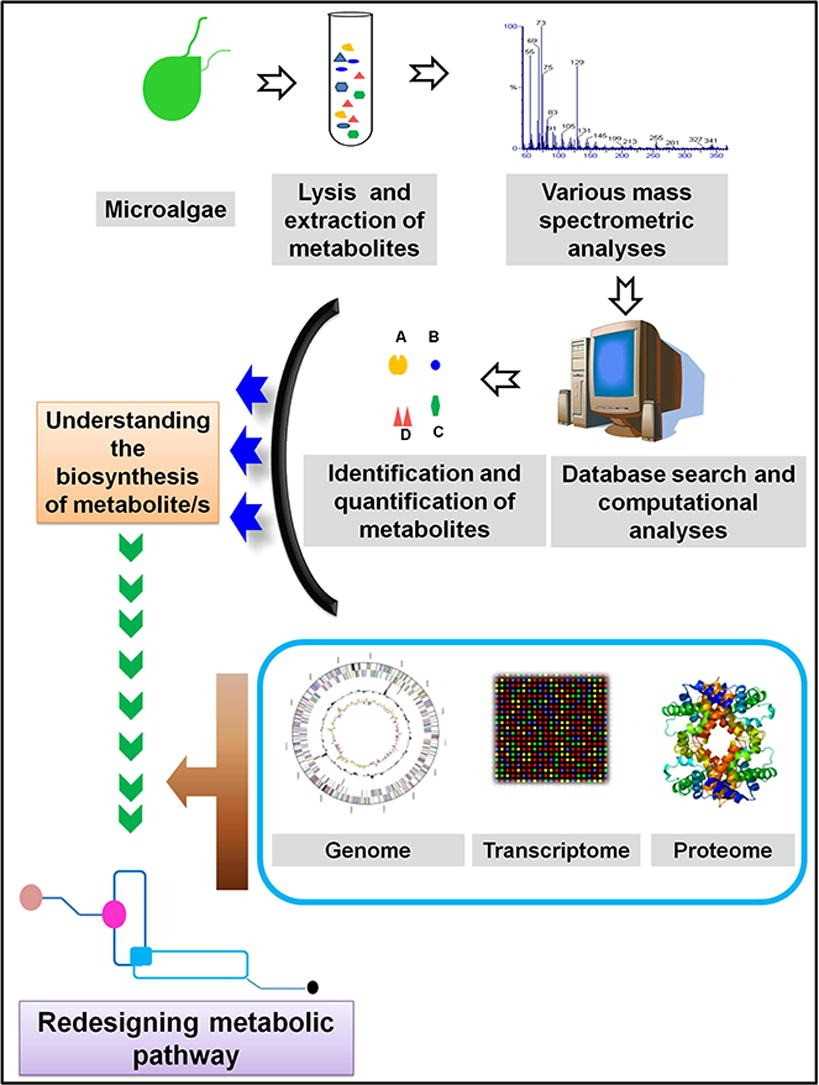The advent of the omics era has revolutionized the study of microalgal biology. Among them, high-throughput proteomics complement microalgal omics and provides accurate functional insights into the accompanying static and dynamic physiological environments. Here, Lifeasible provides professional solutions for microalgal proteomics.
Eukaryotic microalgae are a rich source of commercially important metabolites, including lipids, pigments, sugars, amino acids, and enzymes. However, their inherent genetic potential is often insufficient to support high production of target metabolites. Rapid advances in high-throughput sequencing and spectroscopy technologies have greatly facilitated the identification of new targets for microalgal strain engineering. Proteomics has been established as a powerful tool to explore the mechanisms involved in many biological processes and network functions by providing information about proteins, including post-translational modifications, subcellular localization, and protein-protein interactions. The first proteomic analysis in microalgae was performed in the unicellular freshwater green algae Chlamydomonas reinhardtii, which was selected as a model organism. An integrated approach of proteomics, genomics, and bioinformatics provides sustainable solutions for microalgae.
 Fig 1. High-throughput proteomics and metabolomic studies guide the re-engineering of metabolic pathways in eukaryotic microalgae. (Chakdar H, et al., 2021)
Fig 1. High-throughput proteomics and metabolomic studies guide the re-engineering of metabolic pathways in eukaryotic microalgae. (Chakdar H, et al., 2021)
Genomics and transcriptomics alone are insufficient to understand microalgae's complex biology and should be complemented with proteomic approaches. Our scientists have successfully established model organisms such as the unicellular freshwater green algae Chlamydomonas reinhardtii, diatom P. tricornutum, and on oleaginous microalgae to perform microalgal proteomic analysis. Lifeasible offers customized microalgal proteomics solutions to analyze post-translational modifications, and identify proteins at different levels in sub-polyprotein complexes and their location in different cell types and tissues. We offer microalgal proteomics, including but not limited to the following:
At Lifeasible, our proteomics services for microalgae allow us to isolate and identify proteins from complex protein mixtures in a reliable manner, providing promising feedstocks for the on-demand production of renewable fuels and chemical intermediates. We are your trusted partner in all aspects of microalgae research. If you are interested in our solutions for microalgae proteomics, please do not hesitate to contact us.
Reference
Lifeasible has established a one-stop service platform for plants. In addition to obtaining customized solutions for plant genetic engineering, customers can also conduct follow-up analysis and research on plants through our analysis platform. The analytical services we provide include but are not limited to the following:
Get Latest Lifeasible News and Updates Directly to Your Inbox
Adaptive Evolutionary Mechanism of Plants
February 28, 2025
Unraveling Cotton Development: Insights from Multi-Omics Studies
February 27, 2025